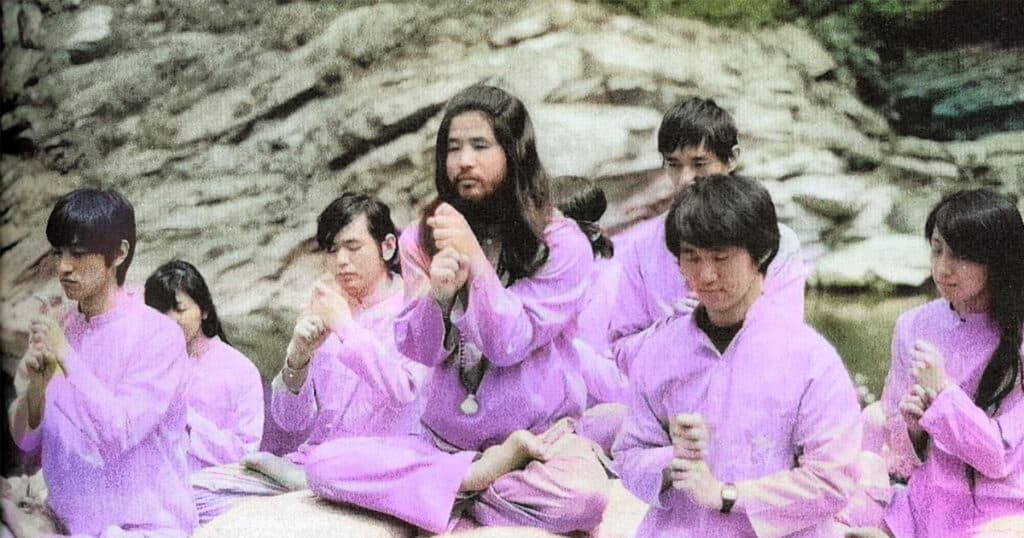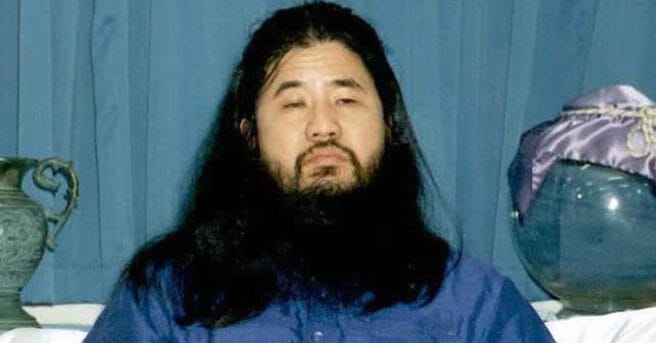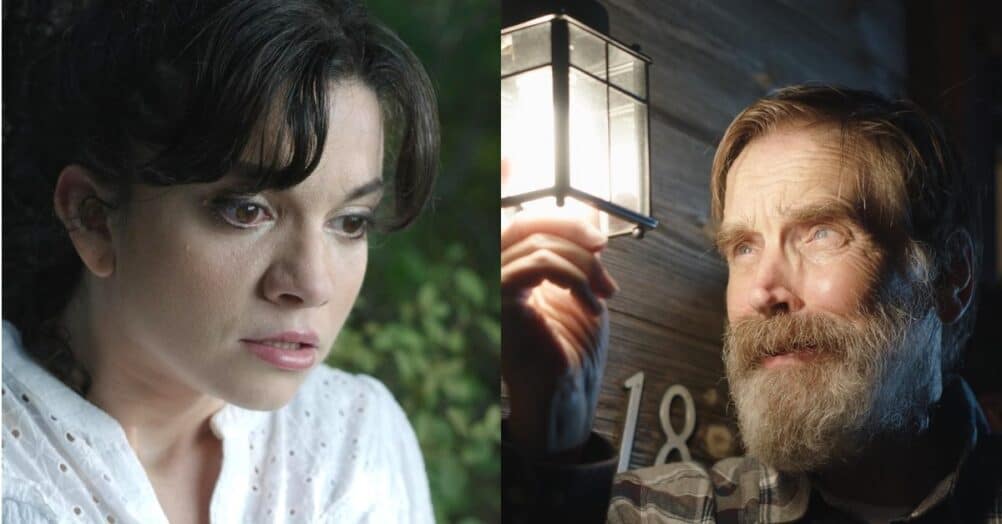
PLOT: A look at Japan’s infamous Aum Shinrikyo doomsday cult, run by Shoko Asahara, who claimed to be Buddha’s reincarnation.
REVIEW: On March 20th, 1995, members of the Aum Shinrikyo cult released deadly sarin gas into the Tokyo Metro system. Thirteen people were killed, and another fifty were injured. It’s still one of the worst domestic terrorist attacks in Japanese history. The nerve gas used, sarin, was first developed by the Nazis during WWII. How did it end up in the hands of a doomsday cult? Director Ben Braun and Chiaki Yanagimoto examine this in their terrifying documentary descent into madness, AUM: The Cult at the End of the World.

Like many in the west, I was only vaguely aware of the Tokyo subway attack, but I didn’t know the story behind it. Suffice it to say it’s quite the tale, with Braun and Yanagimoto examining how Aum Shinrikyo was initially a seemingly innocuous quasi-religion springing from a Yoga School. The cult’s founder, Shoko Asahara, was a celebrity in Japan, popping up regularly on late-night talk shows (including a popular one hosted by Beat Takeshi). He was so popular that he even ran for political office and wrote books that appealed to the young, disenchanted offspring of Japan’s WWII generation. This, coupled with the fact that Japan was in a bit of a financial rut following the go-go seventies and eighties, made Aum a cult that many seemingly intelligent young Japanese people joined, and for a while, their power was immense.
Indeed, AUM covers a lot of ground, so much that one wonders why this wasn’t done as a limited series instead, as there’s a lot of information packed into this two-hour documentary. Even still, it’s edge-of-your seat, compelling stuff, with the filmmakers able to rely on a wealth of footage, thanks to the fact that the cult was anything but media shy. If anything, Shoko Asahara cultivated the media as an ally. The film even uses creepy manga footage to depict their numerous supernatural claims (among other things – he said he could levitate).

What’s really fascinating is how the various talking heads, such as terrorism expert David E. Kaplan and former Japan-based journalist Andrew Marshall are able to contextualize the rise of the cult. One aspect touched upon was how Japan, at the time, was still very much tangling with the ghosts of WWII, where religious freedom was outlawed. As a result, the government was unwilling to crack down on new religions, such as AUM, leaving the organization able to grow into becoming a cult that, in a creepy twist, still exists in some form to this day.
Most compelling are the personal stories, such as the one an elderly Japanese couple tells of their son being seduced into the cult and how they lost their family fortune trying to destroy the organization. The most unnerving interview is with Fumihiro Joyu, who was Shoko Asahara’s second in command. While Asahara and many of his followers got the death penalty in the wake of the subway attack, Joyu only got jail time, as he was in Russia at the time, spreading the cult’s doctrine. He’s utterly detached from any sense of responsibility and tries to present himself as reasonable, being the head of what he calls a milder form of the organization, Hikari no Wa. Over and over, the various people interviewed warn the filmmakers (and thus the audience) not to get suckered in by the “silver-tongued” Joyu, who speaks perfect English and knows exactly how to present himself. To say his appearance is unnerving is an understatement, and while some may take issue with him being on-camera, his presence gives the documentary a terrifying edge.
AUM: The Cult at the End of the World hasn’t been picked up for domestic distribution yet, but it would be a no-brainer for Netflix. This stranger-than-fiction documentary is precisely the kind of thing they’ve had success with in recent years, and it tells a story that’s scarier than any horror movie you’re likely to see.





















Follow the JOBLO MOVIE NETWORK
Follow us on YOUTUBE
Follow ARROW IN THE HEAD
Follow AITH on YOUTUBE